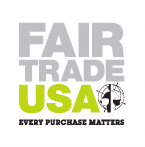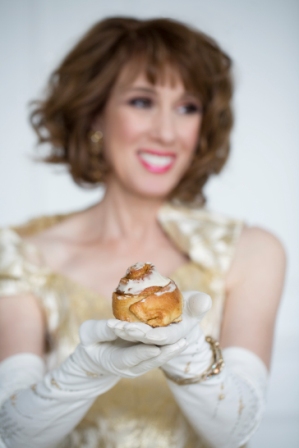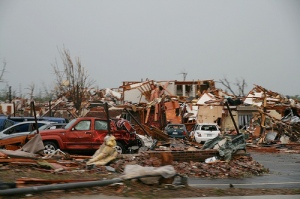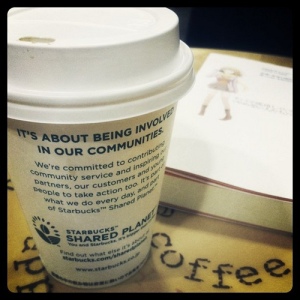The Whole LIFE details my attempts at living intentionally for excellence in WHOLE ways, including how I’ve learned to go against the grain to live more sustainably, what greener products work and which don’t, and how I’m working to protect my family from the toxic hazards of modern-day living.
14 Jan
Time Off For Good Health
Hey, guys, I hate to do this but I’ve needed to take some time off to take care of my health. I hope to be back soon!
16 Dec
Can Hanukkah Candles Poison You?
Petroleum paraffin wax candles, of which most Hanukkah and Christmas candles are made, contain a slew of chemicals not meant for human inhalation–especially not inhalation by small children or those of us with sensitive respiratory systems such as expectant mothers, the elderly, those with asthma and allergies, and pets.
Paraffin wax, aka petroleum paraffin, emit toluene, benzene, formaldehyde and soot. The first three chemicals are carcinogens, neurotoxins, and reproductive toxins while soot acts as a respiratory irritant and contains suspected carcinogens.
Furthermore, many candles, especially those made outside the United States though also including some made within the U.S., have metal core wicks made of pure lead or lead-containing alloys such as commercial-grade zinc (the same alloy recommended as a lead wick replacement by the US Consumer Product Safety Commission).
Each of these substances release into the air when such candles burn.
Luckily, plenty of safer Hanukkah and Christmas candle alternatives exist which reduce or eliminate these harmful air pollutants including vegetable wax, beeswax, and olive oil lamps.
To learn more about the harm of petroleum-based chemicals and to find vegetable wax (including soy) and beeswax Hanukkah candles and olive oil lamp menorah cups, visit my more in-depth Squidoo page:
Keep Your Family Safe This December With Healthier Hanukkah Candles
Remember: Science is now finding that many man-made chemicals we’ve used for years is harmful to our health. We can’t eliminate everything all at once and will live in fear if we try to do so. I suggest taking things with stride and replacing one thing as a time as we buy new things and replace the old. Make your next candle purchase your next step.
Sources:
Healthy Child Tip 62: Not All Candles Are Created Equal
Quick Tips: Enjoy Healthy Holidays
16 Nov
Energy Audit & Efficient-izing My Home: TO DOs
Two weeks ago I invited Joe Page, Home Performance Specialist from Home Green Home, into my home to take a look around and tell me what I could do to make my home more energy-efficient. According to the company, our homes consume 60% of the energy that people consume and 20-40% of that energy is wasted; I wanted to fix these problems as soon as possible and especially before our first St. Louis winter in our new home. The energy audit took about an hour and a half and included a blower door test, thermal photography, visual and smoke inspections, and combustion safety analyses.
I knew my new home wasn’t efficient—it’s rarely comfortable in every room at the same time—but I laughed a little after the blower door test when Joe told me how much our house leaked air. An efficient home replaces about 25-30% of its air an hour, he said. Mine? 104%. Not the worst Joe had seen, but not good.
We couldn’t get into the attic (no entryway—I know; our new house is strange in other ways, too), but he showed me thermal images showing that there was, in fact, insulation in the slanted ceiling walls, though he couldn’t be for certain whether anyone installed insulation in the top of the roof.
Part of the air problem, he told me, lies with a lack of insulation between the lower portion of the gable roof and the inside of our home. We’d need to either attempt to create a block, seal it, and spray paper insulation around it—a challenging and probably messy but not impossible DIY task—or let a professional handle that one.
Things we could do ourselves:
- Seal the leaks in our HVAC duct system (okay, technically he didn’t suggest this because I knew it needed doing and so took care of this a week before he came by)
- Install an insulation blanket around our gas water heater and add pipe insulation to the first five feet of hot and cold water lines (check!)
-

I sprayed expanding foam sealant in a large gap in the wood paneling around a hose in my utility room. After it dried I used my fingers to break off the pieces that stuck out. Not the prettiest job, I know, but it was quick...and it's in my utility room anyway.
Caulk gaps in window and door trim and sills and spray and expanding foam sealant in larger gaps such as in the hole made in the wood paneling for our dryer (check!)
- Install a carbon monoxide alarm on the second floor (check! we already had one on the first floor)
- Have a qualified HVAC contractor install a return register on the second floor
- Insulate around the outlets and switches on outside walls and the switch in our stairway (optional) (check! This is nitpicking, he said, but I did it anyway)
Other things I’m taking into account: the safety of the foam crack and gap sealant. The foam Joe recommended, Great Stuff, had danger warning all over it, and one thing I know about those warnings is that companies don’t want to put them on there unless they have too, and governmental regulatory agencies, affected by politics, tells a company when they must put a label in a product. If a warning says “use gloves” or “use in a well ventilated area,” take heed. I looked for a safer, more environmentally sound foam sealant and I found a foam at sears called Max Fill. It had fewer warnings, made with renewable resources and less petroleum, and claimed to be an eco-friendly air sealing foam. I don’t know if I’d call it eco-friendly, but I would call it a better option than my alternative. As the can prescribed, I wore gloves and safety glasses. (If you know of a better expanding foam sealant, please let me know in the comments.)
Up For Discussion
Does a safe, eco-friendly expanding foam sealant exist? How about joint compound? What other home improvement products have a safe, safer, or eco-friendly equivalent?
4 Nov
Do You Have a Fair Trade Sweet Tooth?
Wednesday night when I walked into the conference room for the most recent St. Louis Jewish Environmental Initiative general meeting a tantalizing surprise met me: a table full of decadent fair trade chocolate desserts!
The night’s guest, Andrea Reubin of Just Sweets dessertery based in St. Louis, visited to discuss her efforts to make tasty deserts more humanity friendly by using Fair Trade Certified ingredients in her desserts and by selling them online nationwide.
“My story is simple: I love dessert but it has to be worth it!” Reubin said, explaining her philosophy of using only top-notch ingredients, as many local as possible, and, first and foremost, for all ingredients produced in developing countries to be Fair Trade Certified. Fair Trade Certified ingredients, she said, translate into living wages that provide food, shelter, clean water, good health, education and the building strong, successful families.
Each of Just Sweets’ desserts have a Fair Trade story, too, detailed on both the website and in a fashionable dessert lookbook. Each ingredient follows each story with each Fair Trade Certified and organic ingredient labeled.
The Just Sweets’s luxurious desserts I sampled and recommend:
 What is Fair Trade?
What is Fair Trade?
Fair Trade USA in the independent, third-party certifier of Fair Trade products in the U.S. Their requirements for becoming Fair Trade Certified revolve around six principles:
- Fair price and credit
- Fair labor conditions
- Direct trade
- Democratic and transparent organizations
- Community development
- Environmental sustainability
- Protecting water resources and natural vegetation areas
- Promoting agricultural diversification, erosion control, and no slash and burn
- Restricting the use of pesticides and fertilizers
- Banning use of genetically modified organisms (GMOs)
- Requiring proper management of waste, water and energy
- Fair Trade also promotes organic farming with training for producers and a higher price for organic products. Many producers invest their Fair Trade premium funds in organic certification, which has led to outstanding results: more than half (62%) of all Fair Trade products in the United States were also organic.
Discussion Question
What Fair Trade items do you buy, and is it important to you?
Sources
Just Sweets : The Fair Trade Movement pdf







